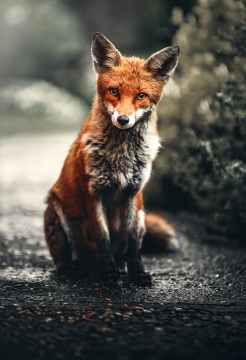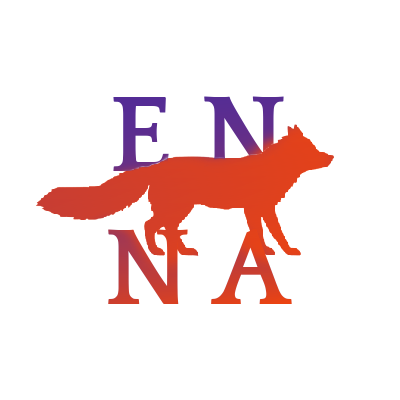Hooks are used to catch fish, but the hook must have something good on it that makes those fish bite.
If no fish bites the hook, the fox will go hungry.

On a serious note, hooks are what reels the reader into your story. Usually, it’s the first sentence. Some people say it’s the first paragraph, but honestly, I think it’s the first sentence. The first sentence is the very first thing the reader will see when they open the book. So, that’s the hook.
Books have hooks, hooks in books. Sounds like Dr. Seuss.
After reading many, many books, I’ve come across many, many hooks. I categorized those hooks so you can use them for your own books and I added some examples from successful, published works of fiction so you can get a better idea of the types of hooks.
5W1H:
This type makes readers ask questions that start with who, what, when, where, why, and how. The answers of which they may only find if they keep reading.
Examples:
1.
“I had just come to accept that my life would be ordinary when extraordinary things began to happen.”
“Miss Peregrine’s Home For Peculiar Children” by Ransom Riggs
What are the extraordinary things that began to happen? It directly contradicts to what the character had just said, so it makes you question.
2.
“It was dark where she crouched but the little girl did as she’d been told.”
“The Forgotten Garden” by Kate Morton
Where is the little girl? How did she get there? Who is the little girl? Why is it dark? Who told the little girl to crouch and why? All these questions for this one sentence shows that it is a great hook.
Details:
This type gets readers intrigued in the scene immediately because it includes details specific for the story.
Examples:
1.
“Lyra and her daemon moved through the darkening Hall, taking care to keep to one side, out of sight of the kitchen.”
“His Dark Materials: Northern Lights” by Philip Pullman
Immediately, Pullman tells us two details. One, the main character’s name is Lyra. Two, there is something called a daemon and it is hers. We now wonder, well what is a daemon? A daemon in “His Dark Materials” trilogy is actually a key detail for the entire plot. Pullman very nicely hooks the reader into this world.
2.
“Only three people were left under the red and white awning of the grease joint: Grady, me, and the fry cook.”
“Water for Elephants” by Sara Gruen
Where are the details? Well, there are three people left. The word “left” is a key detail. That means there were more. So what happened to them? And also, “grease joint”. Why are they in a grease joint? And why does a grease joint need to be mentioned?
3.
Well, I have to include my inspiration, Shannon Hale! 😉
“She was born Anidori-Kiladra Talianna Isilee, Crown Princess of Kildenree, and she did not open her eyes for three days.”
“The Goose Girl” by Shannon Hale
It is a detail that she didn’t open her eyes for three days. It’s unique so it makes you question. Also, we immediately find out the name of the character, her status, and where she lives. I have to say, Hale was very clever with this hook. All the basics of the main character introduced very simply.
Names:
This type gets the reader hooked because they want to know who this strange person is or what they are doing in the situation they are in.
Examples:
1.
“Only three people were left under the red and white awning of the grease joint: Grady, me, and the fry cook.”
“Water for Elephants” by Sara Gruen
To bring Gruen’s hook back, we can also wonder; who is Grady? Who is “me”? What are their ages? What are they like?
2.
“The Healer’s name was Fords Deep Waters.”
“The Host” by Stephenie Meyer
Meyer’s hook for “The Host” not only touches on the Details type of a hook (why a healer?), but also the Names type. Who the heck is Fords Deep Waters and what the heck of a name is that?
Conversational:
This type is where the character talks to the reader or where it’s written as if the character is talking to someone the entire time.
It may start in dialogue format as “The Catcher in the Rye”, or it may also just begin as first person narrative.
“If you really want to hear about it, the first thing you’ll probably want to know is where I was born, and what my lousy childhood was like, and how my parents were occupied and all before they had me, and all that David Copperfield kind of crap, but I don’t feel like going into it, if you want to know the truth.”
“The Catcher in the Rye” by J. D. Salinger
It’s not just the tone of voice that reels you in. You immediately see a slightly angry person standing or sitting before you talking to you or talking to someone. You wonder who this person is and you might feel like you want to read on to see if they will tell that story of their “lousy childhood”.
Dialogue:
This types reels the reader in because it puts the reader smack dab in the middle of someone’s conversation. I separate this from conversational because the characters are not acknowledging the existence of the reader.
I do not have any examples at the moment, but it may go somewhat like this…
“What do you mean we’re moving?” I shouted. Dad put down his newspaper.
“Zee,” he said, using the nickname I hate, “you’ll like it there.”
“I made this up just right now” by The Tiger Writer
It doesn’t have to be immediate drama, however.
“Now, this is your new broom,” the wizard said.
“I made this up just right now 2” by The Tiger Writer
The dialogue is a good hook because it snatches the reader and smacks them right in the middle of a scene. People can often imagine someone talking. It’s easy to do that. After that, all you need to do is keep them in that moment.
Summary
5W1H: Makes readers ask questions that start with who, what, when, where, why, and how. The answers of which they may only find if they keep reading.
Details: Gets readers intrigued in the scene immediately because it includes details for the story.
Names: Gets the reader hooked because they want to know who this strange person is or what they are doing in the situation they are in.
Conversational: Where the character talks to the reader.
Dialogue: Reels the reader in because it puts the reader smack dab in the middle of someone’s conversation.
If I come across any other types, they will be promptly added here.
If you see I missed a type, or if you know examples for Dialogue type or other types, please comment down below 🙂

